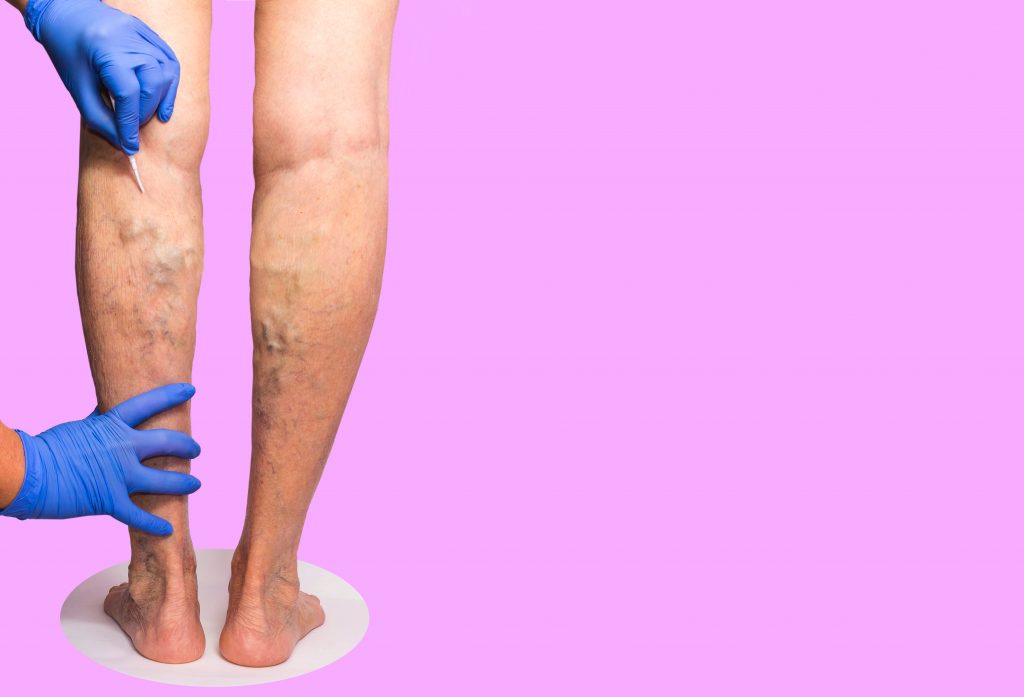Vein Center in Merrick: Vein Treatment Process
Vein Treatment Clinic is the best vein center in Merrick for spider vein and varicose vein treatments. Our double board-certified vein doctor, Dr. Caroline Novak, has specialized training in vascular imaging and the latest minimally invasive varicose vein treatments, such as radiofrequency ablation, endovenous laser ablation, and VenaSeal. Furthermore, our vein clinic also accepts most insurance plans, and we actively help you get optimal insurance coverage for your vein treatment.
Our vein center is highly accessible to those living in Merrick and other cities around Long Island. Vein Treatment Clinic, Long Island, is located on the border of Suffolk County and Nassau County, less than 15 minutes from Merrick via Southern State Pkwy and Great Neck Rd. Our vein clinic also offers plenty of parking spaces, and it’s far from the madding crowd of New York City’s intolerable traffic.
Now that you know how to find our vein center in Merrick, let’s get back to discussing vein treatments. Minimally invasive vein treatments are insanely simple, non-invasive, and safe. However, we’ve noticed that most patients are apprehensive about what the procedure may involve. Our vein center in Merrick believes that your emotional comfort and physical comfort are equally important. To that end, we give you a detailed and step-by-step overview of the vein treatment process, so you know what to expect.
In this article, we provide a detailed overview of the vein treatment process at our vein center in Merrick, Long Island. The following is a brief summary of the different steps in the vein treatment process:
- Step 1: Vein Disease Diagnosis — Duplex Ultrasound
- Step 2: Varicose Vein Treatments — Radiofrequency Ablation, Endovenous Laser Ablation, or VenaSeal
- Step 3:Cosmetic Vein Treatments — Ambulatory Phlebectomy or Sclerotherapy

Step 1: Vein Disease Diagnosis — Duplex Ultrasound
The first step in the vein treatment process is the diagnosis of vein disease. Venous insufficiency is a circulatory disorder in which your vein valves collapse and blood accumulate in your leg veins. Over time, the accumulated blood applies pressure on the vein walls, leading to vein dilation, resulting in spider veins and varicose veins.
As such, venous insufficiency is often the root cause of varicose veins and spider veins. If you have vein disease, the vein doctor must treat vein disease before removing the superficial varicose veins and spider veins. If they only treat spider veins, they will eventually return later. Vein doctors diagnose the root cause of spider veins and varicose veins through Duplex Ultrasound.
Duplex Ultrasound is a vascular imaging procedure in which the vein doctor uses ultrasound to visualize the blood flow in your leg veins. As mentioned previously, vein disease leads to venous reflux, and blood flows backward due to the force of gravity. Vein doctors will identify that through vascular imaging. Furthermore, Duplex Ultrasound will also allow them to identify the diseased saphenous vein.
After the diagnosis, vein doctors curate the ideal varicose vein treatment plan.
Step 2: Varicose Vein Treatments — Radiofrequency Ablation, Endovenous Laser Ablation, or VenaSeal
After the diagnosis, the vein doctors will need to treat the underlying vein disease. This step, however, is only necessary if you have venous insufficiency. If you don’t have underlying venous disease, the vein doctor will move on to the next step and remove the superficial varicose veins and spider veins through cosmetic vein treatments.
Your vein doctor will recommend one of the following varicose vein treatments.
- Radiofrequency Ablation: The vein doctor uses thermal energy channeled through a catheter to collapse the diseased saphenous vein.
- Endovenous Laser Ablation: The vein doctor uses laser energy channeled through a laser fiber to collapse the diseased saphenous vein.
- VenaSeal: The vein doctor injects the VenaSeal medical adhesive into the diseased saphenous vein to seal their vein walls.
All minimally invasive varicose vein treatments are performed under local anesthesia, so they cause minimal pain or discomfort. All of these vein treatments have the same underlying goal — identify and collapse the problematic saphenous vein. Once the diseased vein collapses, the accumulated blood flows to healthier veins, restoring smooth blood circulation to the heart.
Step 3: Cosmetic Vein Treatments — Ambulatory Phlebectomy or Sclerotherapy
After the varicose vein treatment, the vein doctor will perform cosmetic vein treatments to remove the visible spider veins and varicose veins from your skin. Cosmetic vein treatments are only used to remove the external appearance of your legs — they don’t address the underlying vein disease.
Your vein doctor will recommend the following cosmetic vein treatments.
- Ambulatory Phlebectomy: The vein doctor removes the superficial varicose veins through incisions on the skin.
- Sclerotherapy: The vein doctor injects a medicine called sclerosant into the spider veins, fusing their vein walls. The spider veins turn into hardened scar tissues that eventually get absorbed by the body, fading away from the skin.
Importance and Necessity of Vein Treatment
Surgical treatments were the standard treatments for vein disease in the past. However, thanks to recent advancements in vein care and technologies, vein doctors can treat varicose veins and spider veins using minimally invasive procedures.
The aforementioned varicose vein treatments have the following benefits:
- Minimally invasive and non-surgical.
- Painless and comfortable.
- Completely safe with a negligible risk of side effects.
- Highly-effective with a 97% success rate.
- Radiofrequency ablation and endovenous laser ablation are eligible for insurance coverage.
- Outpatient procedures that conclude within an hour.
- No recovery time.
Schedule an Appointment with our Board-Certified Vein Doctor
Vein Treatment Clinic, Long Island, is the best vein center in Merrick. For more information, please consult our board-certified vein doctor today.
